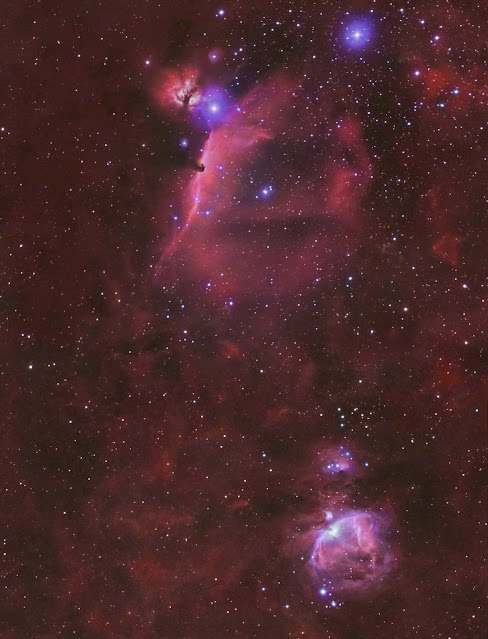Barnard's Loop SH2-276 and M78, NGC2068.
This lies in the eastern limb of Orion at a distance of about 1,600 light years.
I took this image on two separate evenings with no moon light , stars were visible down to magnitude 5 .
I was using a 200mm f/4 lens attached to an Atik 383L mono CCD camera, piggybacked on my ten inch reflector mounted on a Vixen Atlux mount. I was also using PHD auto guiding and a set of Astronomik RGB and Narrowband filters.
I captured five minute sub frames with matching dark frames and combined them with flat field frames to reduce the effect of noise and vignetting in the final image. The total exposure time was 100 minutes using a H Alpha filter, 15 minutes using an O111 filter, 20 minutes using a H Beta filter, 15 minutes using a S11 filter and 10 minutes using a blue filter.
Clicking on the image will give an even closer view
Barnard's Loop and M78















